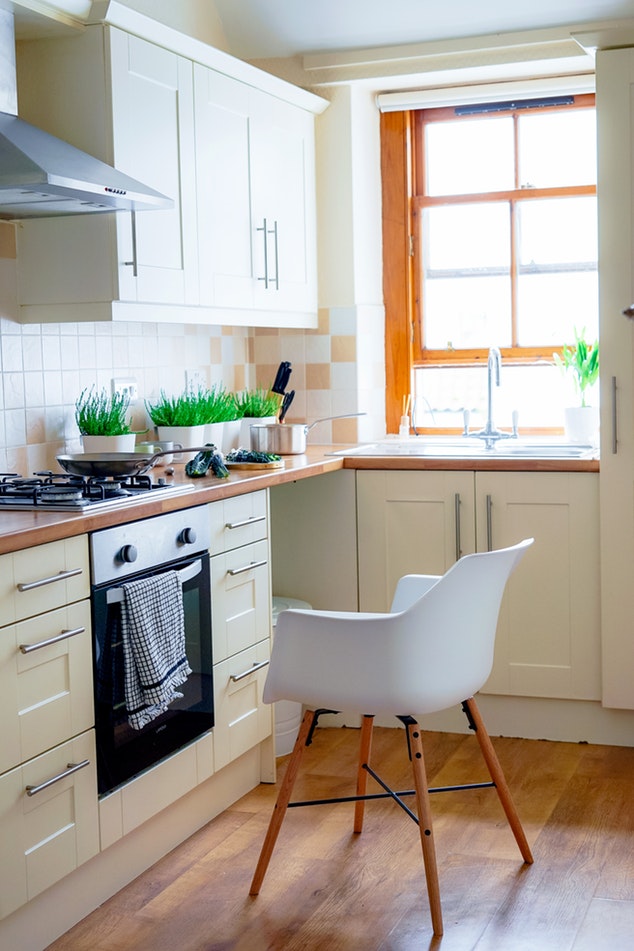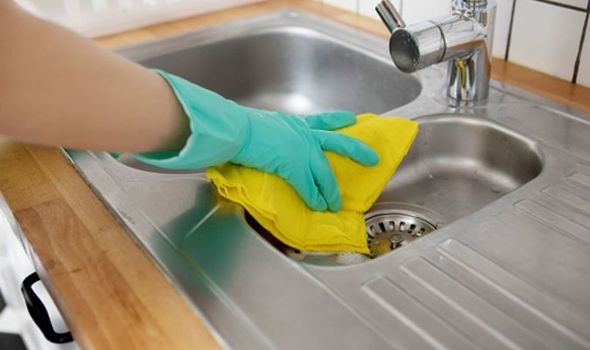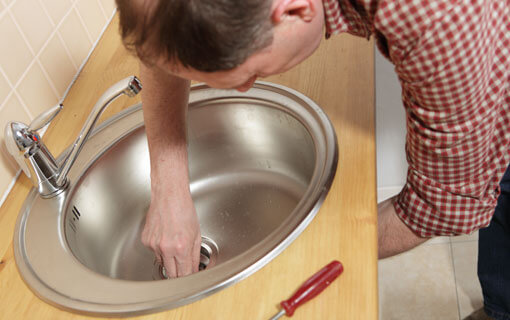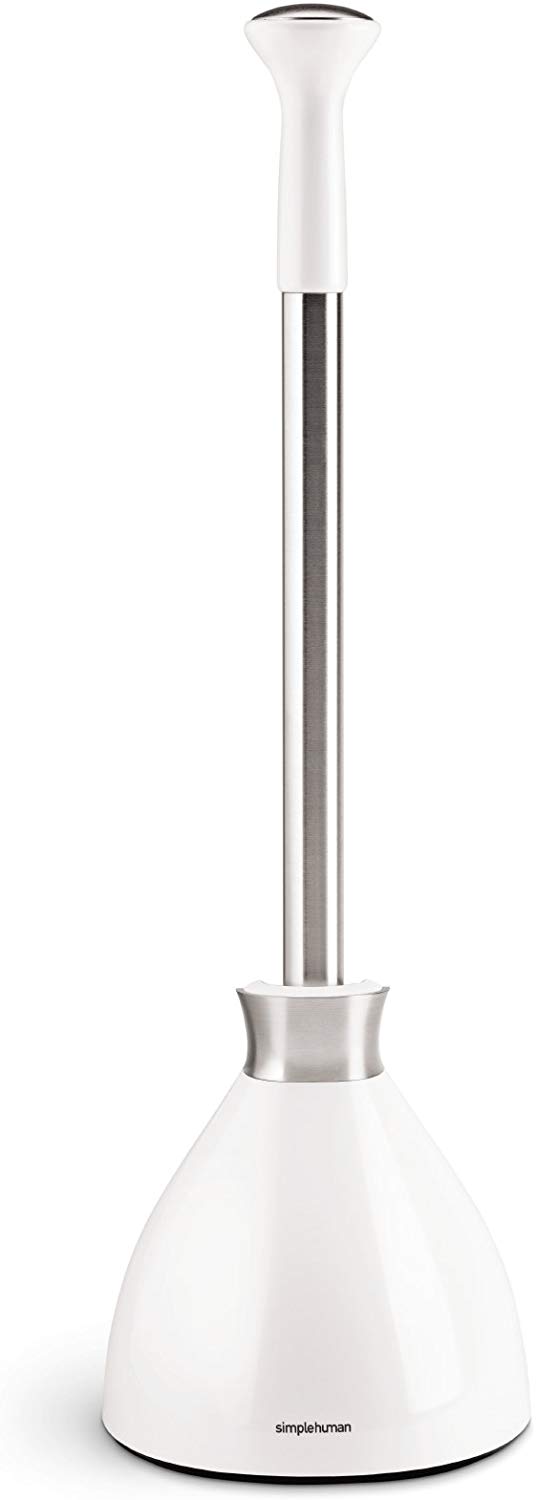Unclogging a Kitchen Sink Drain
If you've ever experienced a full kitchen sink drain, you know how frustrating and inconvenient it can be. Not only does it disrupt your daily routine, but it can also lead to unpleasant odors and potential water damage. Fortunately, unclogging a kitchen sink drain is a fairly simple task that can be done with a few basic tools and some elbow grease.
One of the most common causes of a full kitchen sink drain is a buildup of food particles, grease, and other debris. Over time, this can create a blockage that prevents water from draining properly. To fix this issue, start by removing any visible debris from the drain using a pair of tongs or a small wire brush. Then, pour a mixture of hot water and dish soap down the drain to help break up any remaining buildup.
If the blockage is more stubborn, you may need to use a plunger to force the debris out of the drain. Be sure to cover the other drain opening with a wet cloth or stopper to create a seal and increase the suction. Plunge vigorously for a few minutes, then remove the plunger and run hot water down the drain to flush out any loosened debris.
How to Fix a Clogged Kitchen Sink Drain
If the above methods don't work, it's possible that the clog is deeper in your pipes and will require a bit more effort to fix. One effective method is to use a plumbing snake, also known as a drain auger. This tool is specifically designed to break up and remove stubborn clogs in drains and pipes.
To use a plumbing snake, insert the end with the auger into the drain and begin turning the handle clockwise. This will help to push the snake through the drain and break up any clogs. Continue turning the handle until you feel the snake reach the clog, then gently push and pull the snake to dislodge the blockage. Once the clog has been cleared, run hot water down the drain to flush out any remaining debris.
Clearing a Full Kitchen Sink Drain
If you have a double sink, you may notice that only one side is draining properly while the other side is full. This could be due to a clog in the shared drainpipe. In this case, you will need to remove the drain stopper and use a plumbing snake to clear the blockage. If the clog is located further down the shared drainpipe, you may need to remove the trap and manually remove the debris.
Another effective method for clearing a full kitchen sink drain is to use a mixture of baking soda and vinegar. Simply pour a cup of baking soda down the drain, followed by a cup of vinegar. The chemical reaction between the two will help to break up any blockages. Let the mixture sit for about 15 minutes, then flush it down with hot water.
Kitchen Sink Drain Maintenance
Prevention is key when it comes to keeping your kitchen sink drain from becoming full. One way to maintain a clear drain is to regularly pour boiling water down the drain to dissolve any grease or buildup. You can also use baking soda and vinegar on a monthly basis to keep your drain clean and free of clogs.
Another important maintenance tip is to never pour grease, oil, or food scraps down the drain. These substances can solidify and cause major clogs in your pipes. Instead, dispose of them in the trash or compost them.
DIY Kitchen Sink Drain Cleaning
While there are many effective DIY methods for unclogging a full kitchen sink drain, it's important to know when it's time to call a professional. If you have tried all of the above methods and your sink is still not draining properly, it could be a sign of a larger issue, such as a damaged pipe or tree root intrusion. In these cases, it's best to leave the job to a licensed plumber to avoid causing further damage.
However, for minor clogs and regular maintenance, DIY cleaning methods can save you time and money. Just be sure to use caution and follow proper safety measures to avoid any injuries or further damage to your pipes.
Preventing a Full Kitchen Sink Drain
The best way to deal with a full kitchen sink drain is to prevent it from happening in the first place. In addition to regular maintenance, there are a few simple habits you can adopt to keep your drains clear. First, always use a sink strainer to catch any food scraps and debris before they make their way down the drain. You should also avoid pouring any chemicals down the drain, as these can corrode your pipes and cause more harm than good.
Another way to prevent a full kitchen sink drain is to be mindful of what you put in your garbage disposal. Avoid putting fibrous or starchy foods, such as potato peels and coffee grounds, down the disposal as these can easily cause clogs. And always run cold water while using the disposal to help flush debris down the drain.
Troubleshooting a Clogged Kitchen Sink Drain
If your kitchen sink drain is still not draining properly after trying all of the above methods, it may be time to troubleshoot the issue. Start by checking the garbage disposal, as this is often the culprit for a clogged kitchen sink drain. Make sure it is turned off and look for any visible objects or debris that may be causing a blockage. You can also try resetting the disposal by pressing the reset button located on the bottom or side of the unit.
If the disposal seems to be functioning properly, it could be a blockage in the pipes. In this case, you may need to use a plumbing snake or call a professional plumber to inspect and clear the blockage.
Using a Plunger on a Kitchen Sink Drain
A plunger is a simple yet effective tool for unclogging a full kitchen sink drain. To use a plunger, make sure there is enough water in the sink to cover the rubber end of the plunger. Place the plunger over the drain and use a wet cloth or stopper to cover the other drain opening. Then, plunge vigorously for a few minutes to create suction and dislodge the clog. Once the water starts draining, remove the plunger and run hot water down the drain to clear any remaining debris.
Chemical Drain Cleaners for Kitchen Sinks
Chemical drain cleaners can be a quick and easy solution for a full kitchen sink drain, but they should be used with caution. These cleaners contain harsh chemicals that can corrode your pipes and harm the environment. They can also be harmful if not used properly, so be sure to follow the instructions carefully and wear protective gear.
If you do choose to use a chemical drain cleaner, be sure to use one that is specifically formulated for kitchen sinks and avoid using it on a regular basis. These cleaners should be a last resort and should not be relied upon as a long-term solution for clogs.
Professional Kitchen Sink Drain Cleaning Services
If all else fails, it may be time to call in the professionals. A licensed plumber has the knowledge and tools to effectively clear even the toughest clogs in your kitchen sink drain. They can also inspect your pipes and identify any potential issues before they become major problems.
Professional drain cleaning services may cost more upfront, but they can save you time, hassle, and money in the long run. Plus, you can rest assured that the job will be done safely and effectively, giving you peace of mind and a fully functioning kitchen sink drain once again.
Kitchen Sink Drain Full? Here's How to Keep Your Drain Clear and Clean

Don't Let a Clogged Kitchen Sink Drain Ruin Your Day
 Having a full kitchen sink drain is one of the most common and frustrating issues homeowners face. It can cause unpleasant odors, slow draining, and even lead to more serious plumbing problems if left untreated. But don't worry, there are simple and effective ways to prevent and clear a clogged kitchen sink drain.
Having a full kitchen sink drain is one of the most common and frustrating issues homeowners face. It can cause unpleasant odors, slow draining, and even lead to more serious plumbing problems if left untreated. But don't worry, there are simple and effective ways to prevent and clear a clogged kitchen sink drain.
What Causes a Kitchen Sink Drain to Get Full?
:max_bytes(150000):strip_icc()/how-to-install-a-sink-drain-2718789-hero-24e898006ed94c9593a2a268b57989a3.jpg) First, it's important to understand what causes a kitchen sink drain to get full in the first place. The most common culprit is food scraps and grease buildup. When we rinse dishes or pour cooking oil down the drain, it can solidify and create a blockage. Other common causes include soap scum, small objects accidentally falling down the drain, and tree roots infiltrating the pipes.
First, it's important to understand what causes a kitchen sink drain to get full in the first place. The most common culprit is food scraps and grease buildup. When we rinse dishes or pour cooking oil down the drain, it can solidify and create a blockage. Other common causes include soap scum, small objects accidentally falling down the drain, and tree roots infiltrating the pipes.
Prevention is Key
 The best way to avoid a full kitchen sink drain is to prevent it from happening in the first place. Start by being mindful of what you put down the drain. Avoid pouring grease or oil down the drain and use a strainer to catch food scraps. Regularly clean the drain stopper and run hot water down the drain after each use to help prevent any buildup.
The best way to avoid a full kitchen sink drain is to prevent it from happening in the first place. Start by being mindful of what you put down the drain. Avoid pouring grease or oil down the drain and use a strainer to catch food scraps. Regularly clean the drain stopper and run hot water down the drain after each use to help prevent any buildup.
Keep Your Drain Clear and Clean
 If your kitchen sink drain is already full, there are a few methods you can try to clear it. One effective method is using a plunger to create suction and dislodge the blockage. You can also try using a drain snake to manually remove any debris. For tougher clogs, you may need to use a chemical drain cleaner, but be sure to follow the instructions carefully and use protective gear.
If your kitchen sink drain is already full, there are a few methods you can try to clear it. One effective method is using a plunger to create suction and dislodge the blockage. You can also try using a drain snake to manually remove any debris. For tougher clogs, you may need to use a chemical drain cleaner, but be sure to follow the instructions carefully and use protective gear.
Maintain Your Plumbing System
In Conclusion
 A full kitchen sink drain may seem like a small inconvenience, but it can quickly turn into a major problem if left untreated. By taking preventative measures and properly maintaining your plumbing system, you can avoid the frustration and expense of a clogged drain. And if you do encounter a full kitchen sink drain, now you know some effective ways to clear it and keep your drain clear and clean.
A full kitchen sink drain may seem like a small inconvenience, but it can quickly turn into a major problem if left untreated. By taking preventative measures and properly maintaining your plumbing system, you can avoid the frustration and expense of a clogged drain. And if you do encounter a full kitchen sink drain, now you know some effective ways to clear it and keep your drain clear and clean.
/plumber-unclogging-kitchen-sink-169270382-5797a9355f9b58461f27f024.jpg)



























:max_bytes(150000):strip_icc()/freshen-and-unclog-drain-with-baking-soda-1900466-22-bbf940b70afa4d5abef0c54da23b1d3f.jpg)











:max_bytes(150000):strip_icc()/Kitchensinkdrain-GettyImages-184337984-5a0c63b447c2660037542e67.jpg)
































:max_bytes(150000):strip_icc()/woman-wearing-yellow-washing-up-gloves-to-unblock-sink-using-plunger-close-up-131987463-5887cfc03df78c2ccd92ec9e.jpg)




















:strip_icc()/how-to-clean-a-bathroom-sink-drain-01-c728294c8bee42428afdf3e69f449279.jpg)










